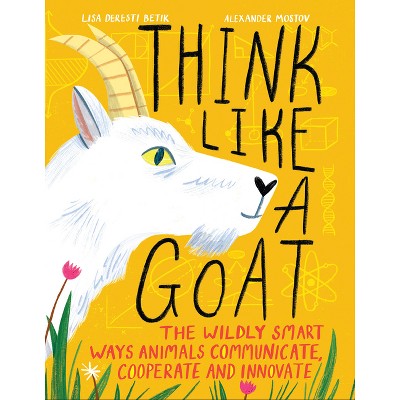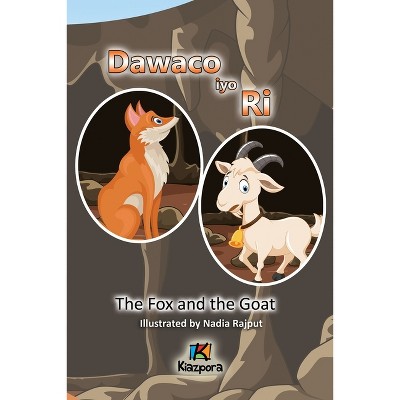Sponsored

The Snow Leopard and the Goat - (Culture, Place, and Nature) by Shafqat Hussain (Paperback)
In Stock
Sponsored
About this item
Highlights
- Who should bear the cost of protecting charismatic wildlife?Following the downgrading of the snow leopard's status from "endangered" to "vulnerable" by the International Union for Conservation of Nature in 2017, debate has renewed about the actual number of snow leopards in the wild and the most effective strategies for coexisting with these enigmatic animals.
- About the Author: Shafqat Hussain is associate professor of anthropology at Trinity College.
- 240 Pages
- Nature, Endangered Species
- Series Name: Culture, Place, and Nature
Description
About the Book
"Following the downgrading by the International Union for Conservation of Nature (IUCN) of snow leopard status in September 2017 from 'endangered' to 'vulnerable,' debate has renewed about the actual numbers of snow leopards in the wild and strategies for facilitating coexistence between these enigmatic animals and humans. Evidence from Pakistan and other parts of the snow leopard home range shows that snow leopards rely heavily on human society for their existence, as domestic livestock accounts for as much as 70 percent of their diet. By maintaining that the snow leopard is a 'wild' animal, conservation NGOs and state agencies have put laws in place that punish farmers for attacking the snow leopard, but they avoid engagement with efforts to mitigate the economic burden suffered by farmers whose herds are reduced by snow leopards. This ethnography examines the uneven distribution of costs and benefits involved in snow leopard conservation in the Karakoram and Himalayan mountains of northern Pakistan and shows that for the conservation of nature to be successful, the vision, interests and priorities of those most affected by conservation policies--in this case, local farmers--must be addressed. The Snow Leopard and the Goat shows that characterization of this dilemma as a conflict between humans (farmers) and wildlife (snow leopards) is in fact misleading, as the real conflict is between two human groups--farmers and conservationists--who see the snow leopard differently"Book Synopsis
Who should bear the cost of protecting charismatic wildlife?
Following the downgrading of the snow leopard's status from "endangered" to "vulnerable" by the International Union for Conservation of Nature in 2017, debate has renewed about the actual number of snow leopards in the wild and the most effective strategies for coexisting with these enigmatic animals. Evidence from Pakistan and other countries in the snow leopard's home range shows that they rely heavily on human society--domestic livestock accounts for as much as 70 percent of their diet. Maintaining that the snow leopard is a "wild" animal, conservation NGOs and state agencies have enacted laws that punish farmers for attacking these predators, while avoiding engaging with efforts to mitigate the harms suffered by farmers whose herds are reduced by snow leopards.
This ethnography examines the uneven distribution of costs and benefits involved in snow leopard conservation and shows that for the conservation of nature to be successful, the vision, interests, and priorities of those most affected by conservation policies--in this case, local farmers--must be addressed. A case history of Project Snow Leopard in the mountains of northern Pakistan, which inspired similar programs in India, Bhutan, Nepal, Mongolia, Afghanistan and Tajikistan, describes how the animal's food habits are studied, how elusive individuals are counted, and how a novel kind of "snow leopard insurance" has protected the species by compensating farmers for livestock losses. The Snow Leopard and the Goat demonstrates that characterizing this conflict as one between humans (farmers) and wildlife (snow leopards) is misleading, as the real conflict is between two human groups--farmers and conservationists--who see the snow leopard differently.
Review Quotes
"[A] breath of fresh air, suggesting room for optimism amidst the gloom of despairing writing on the snow leopard."
-- "Conservation and Society""[A] fascinating account of snow leopard con-servation in Baltistan... Shafqat's dissection of conservation discourse exposes the inverse cor-relation between resource distribution and responsibilities in conservation."
-- "Journal of Anthropological Research""Carefully documenting the history of the snow leopard and its trade around the world, evaluating the science asso-ciated with snow leopard conservation and its uncertainties, and contextualizing it with rich ethnographic work, Hussain makes an important contribution to highlight the challenges and dynamics of operationalizing global conservation priorities at the local level."
-- "Journal of Asian Studies""Hussain provides context on the animal (the snow leopard) and the area (mountainous Baltistan) in question by examining how both Islam and residual traces of Bon, the area's now extinct pre-Islam religion, influence local attitudes. . . . Readers interested in animal conservation will find much to ponder in this thoughtful study."
-- "Publishers Weekly""The theoretically dense and historically rich chapters provide a nuanced understanding of how the life of the snow leopard is intertwined with the life of the goat and other livestock that are kept by the poor Balti herders in open corrals to meet their everyday nutritional needs... Shafqat Hussain's careful analysis invites us to consider the agentivity of this elegant predator in harsh remote terrains, and by combining empirical evidence and scientific analyses, explains how domestic livestock continue to sustain the numbers of this vulnerable cat in the wild."
-- "Pacific Affairs"About the Author
Shafqat Hussain is associate professor of anthropology at Trinity College. He is the author of Remoteness and Modernity: Transformation and Continuity in Northern Pakistan.












